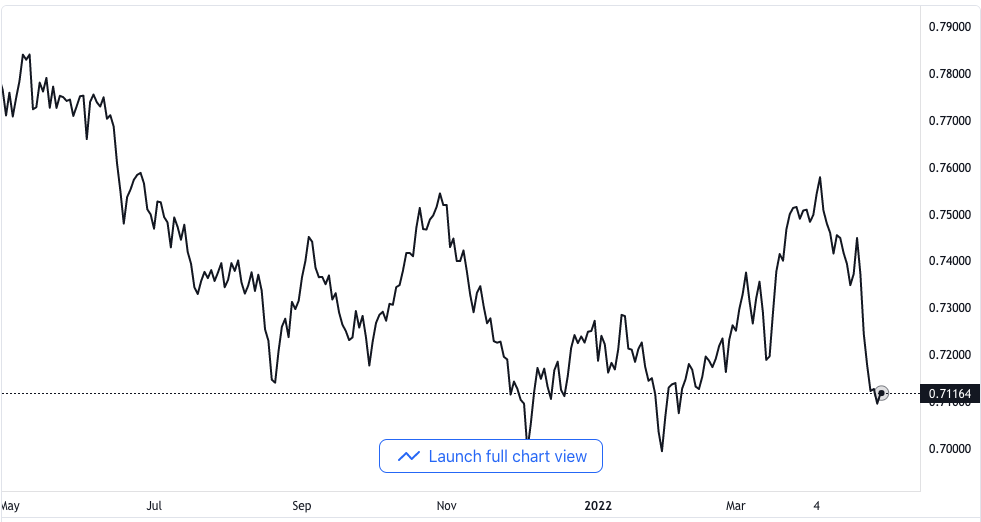
AUD/USD Steps Down from Its Daily High, Maintains Good Bid Close to Mid-0.7100 as USD Weakens Averagely
A Favorable Session in North America
The AUD/USD currency pair maintained its solid intraday rebound gains slightly above the mid-0.7100 line throughout the course of the North American session, and it had just a little movement after the publication of the macro data of the US.

AUD/USD price chart. Source TradingView
The currency pair saw a short period of bounce on Friday, and it moved out from the lowest point it had been since the early days of February, which was close to 0.7055 levels it reached the day before as the general weakness of the US Dollar.
The flows of the month-end are responsible for triggering bullish traders of the US Dollar to take off some gains from the table following the bullish run that saw it ascending to a peak of five years recently.
Aside from that, there is no other conspicuous catalyst responsible for the downtick of the US Dollar, and it remains quite limited in the midst of the general expectation that the Federal Reserve is going to implement a more aggressive monetary policy to fight inflation.
The Federal Reserve is expected to increase interest rates by 50 basis points during its meeting on the 3rd to 4th of May and also during its meetings in June and July.
It is expected that when another increase of 50 basis points is implemented in September, it will finally have raised interest rates by about 3.0% towards the end of this year, all in a bid to tame the rampaging inflation.
The PCE
The speculations for the interest were confirmed by the publication of the Price Index of the Personal Consumption Expenditure for the month of March. The PCE inflation measure, which the Federal Reserve favors, made an acceleration to its highest point for the first time since January 1982, and it increased by 6.6% year-on-year in the month of March.
It helped to take off a portion of disappointment from the central PCE.
More available details show that Personal Income and Expenditure increased by 0.5% and 1.11% respectively in the month of March. It makes it the sixth consecutive month for the rise of person oncome and the third consecutive month for the rise of expenditure.
Aside from that, too, the reduced tone of risk aided the safe-haven US Dollar in shedding some of its intraday losses, and it became a headwind against the Australian Dollar, which is considered a riskier commodity. Therefore, investors might want to wait to see some follow-up purchases before they confirm that the pair is tanked for the short term.









































